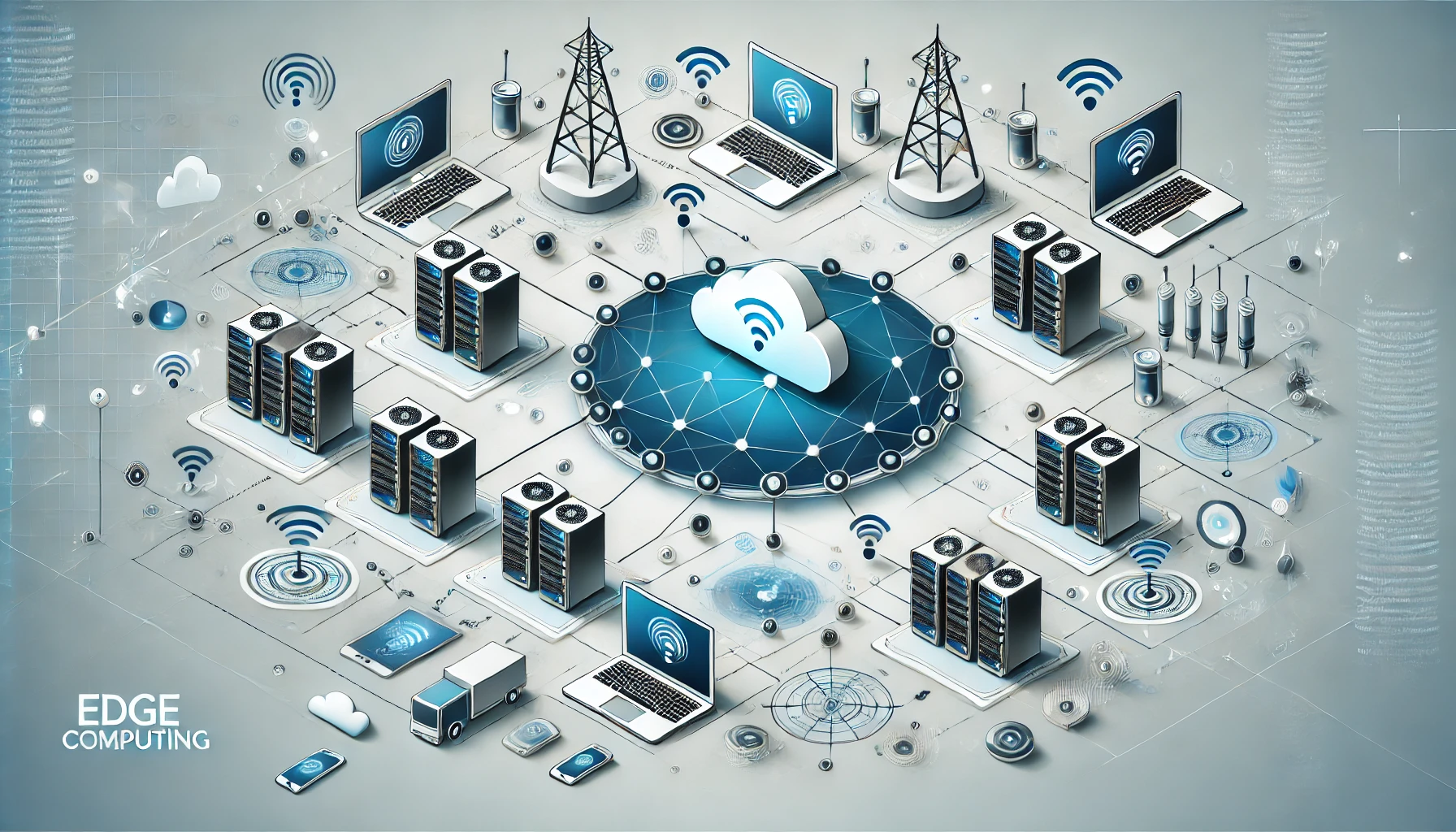The way we develop and deploy applications is evolving, and edge computing is at the forefront of this transformation. By bringing computing closer to the data source or user, edge computing reduces latency, improves performance, and enables new possibilities for application development. But as with any paradigm shift, it comes with its own set of challenges.
In this post, we’ll explore what edge computing is, why it matters, its advantages, and the challenges developers face when implementing edge-based solutions.
What Is Edge Computing?
Traditional cloud computing relies on centralized data centers to process and store data. Edge computing, on the other hand, moves computation and data storage closer to the source of data generation—whether it’s a sensor, device, or user.
Key Features of Edge Computing:
- Decentralization: Processing occurs at or near the edge of the network.
- Low Latency: Data doesn’t have to travel to a distant data center and back.
- Scalability: Applications can scale across multiple edge locations without relying solely on central cloud infrastructure.
Why Does Edge Computing Matter?
As IoT devices proliferate and real-time applications become more common, the demand for low-latency and high-performance computing has skyrocketed. Edge computing addresses this by reducing the reliance on centralized data centers and enabling faster, more efficient data processing.
Applications like autonomous vehicles, smart cities, and augmented reality (AR) depend on edge computing to deliver seamless user experiences and reliable functionality.
Advantages of Edge Computing for Developers
- Reduced Latency
- Why it matters: Applications like video streaming, gaming, and IoT rely on real-time responses. Edge computing reduces the time it takes for data to travel, improving responsiveness.
- Example: A self-driving car processes data from its sensors locally, ensuring immediate decision-making without waiting for a cloud server response.
- Improved Reliability
- Why it matters: Centralized systems are prone to single points of failure. Edge computing distributes workloads across multiple locations, ensuring higher availability.
- Example: A smart factory can continue operations locally even if its connection to the central cloud is interrupted.
- Enhanced Security and Privacy
- Why it matters: By processing data locally, edge computing reduces the need to transmit sensitive information over the internet, minimizing the risk of data breaches.
- Example: A healthcare device analyzing patient data locally can ensure compliance with privacy regulations like HIPAA.
- Bandwidth Optimization
- Why it matters: Transmitting large volumes of data to a central cloud can strain bandwidth and increase costs. Edge computing processes data locally and only sends essential information to the cloud.
- Example: A security camera analyzes footage locally to detect motion and only uploads relevant clips to the cloud.
- New Application Opportunities
- Why it matters: Applications like AR, VR, and IoT require ultra-low latency and localized processing, opening up possibilities for developers to innovate.
- Example: A real-time AR navigation app processes data locally on the user’s device, ensuring a smooth experience.
Challenges of Edge Computing for Developers
- Distributed Architecture Complexity
- Challenge: Managing applications across multiple edge locations introduces new challenges in deployment, monitoring, and maintenance.
- Solution: Use containerization and orchestration tools like Kubernetes for consistent deployment.
- Hardware Constraints
- Challenge: Edge devices often have limited processing power, storage, and memory compared to centralized servers.
- Solution: Optimize applications for resource efficiency and leverage lightweight frameworks.
- Security Risks
- Challenge: Distributing data across multiple locations increases the attack surface for potential breaches.
- Solution: Implement strong encryption, authentication, and access control measures.
- Data Synchronization
- Challenge: Ensuring consistency between edge devices and the central cloud can be difficult, especially in real-time applications.
- Solution: Use edge-to-cloud synchronization protocols and establish clear data management strategies.
- Scalability
- Challenge: Scaling edge computing solutions requires balancing workloads across diverse environments.
- Solution: Design applications to be modular and leverage edge management platforms.
Tools and Platforms for Edge Computing
- AWS IoT Greengrass
- Allows developers to run local compute, messaging, and data caching on edge devices.
- Azure IoT Edge
- Extends Azure cloud capabilities to edge devices for seamless integration.
- Google Distributed Cloud Edge
- Offers a platform to deploy and manage edge computing applications at scale.
- Kubernetes
- Provides a container orchestration solution that works well for deploying and managing edge applications.
Best Practices for Developers
- Design for Failure
- Ensure your application can handle edge device failures gracefully by implementing redundancy and failover mechanisms.
- Optimize for Performance
- Prioritize resource efficiency in edge applications to maximize the limited hardware capabilities.
- Secure the Edge
- Protect sensitive data with encryption, secure boot processes, and regular security updates.
- Leverage Hybrid Architectures
- Combine edge computing with central cloud resources to balance performance and scalability.
Conclusion
Edge computing is transforming how developers design and deploy applications. By addressing latency, reliability, and bandwidth challenges, it’s enabling new possibilities for innovation in real-time, data-intensive scenarios. However, developers must also navigate the complexities of distributed architecture, security, and scalability.
Embracing edge computing today positions developers at the cutting edge of technological advancement, ready to meet the demands of tomorrow’s applications. Start small, experiment with tools, and gradually incorporate edge solutions into your projects to stay ahead in this rapidly evolving field.

